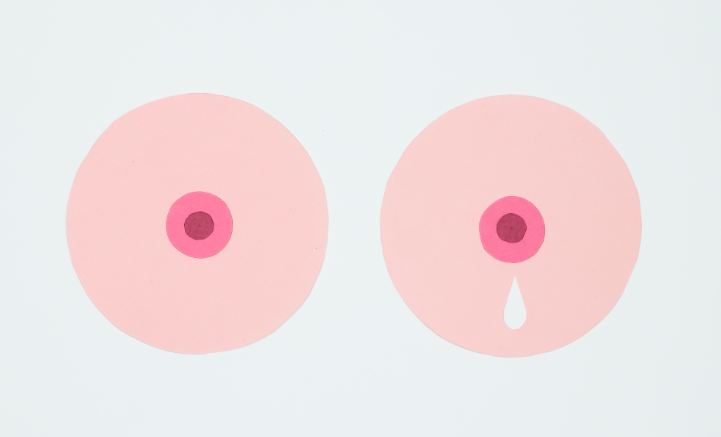What Do These Different Breast Milk Colors Mean?

© Nadezhda Moryak / Pexels
Motherhood is the most accomplished feeling in the world for many women in the world. Raising your own child can be a fascinating experience and it is exciting, to say the least. However, motherhood also comes with plenty of troubles and panicking moments. One of them is definitely the breast milk colors a mother can experience during pregnancy or while breastfeeding. However, there is an answer for everything! And you definitely do not need to worry if your breast milk color is not pearly white. Here is what else you can expect.
Why Do Breast Milk Colors Change?
Breast milk is often referred to as “liquid gold” due to its remarkable ability to adapt to the changing needs of a baby. Here are some fascinating ways in which breast milk changes:
Breast Milk Changes As Your Baby Grows
Initially, breast milk contains colostrum, a thick, honey-textured substance packed with immune-boosting components like secretory immunoglobulin A (SIgA), which shields the baby’s internal organs and lining of vital tracts. After a few days, breast milk transitions to transitional milk and eventually to mature milk, adapting to the baby’s developmental requirements. During the toddler years, milk production decreases, concentrating on immunological components.
Breast Milk Changes During Growth Spurts and Illnesses
Breast milk remains relatively consistent in its composition throughout the first year but can respond to micro-level changes. During growth spurts, babies may nurse more frequently, increasing the fat content in the milk. This breast milk can also adapt when a baby is sick or when the mother is exposed to illness, producing illness-specific antibodies for protection.
Breast Milk Changes From Day to Night
The milk exhibits variations throughout the day and night. Morning milk tends to have greater volume and faster flow due to higher levels of prolactin, while evening milk contains more serotonin and elements that promote sleep.

Breast Milk Changes During Feeding
Breast milk composition changes during feeding, with foremilk being more watery and hindmilk being fattier. It’s essential to ensure that the baby actively drinks and doesn’t just suck for an extended period on one breast to get the right milk composition.
Breast Milk Changes in Color
The color of breast milk can vary from bluish, yellow, and cream, to orange, all of which are safe for the baby. However, pink, red, or rusty-colored milk may indicate the presence of blood, which should be investigated, especially if it’s not linked to nipple damage.
Breast Milk Changes in Flavor
The food a mother consumes can influence the flavor of breast milk, with some tastes lasting longer than others. Babies can develop preferences based on the flavors they encounter through breast milk. Additionally, the composition of breast milk itself affects its flavor; colostrum, for instance, tastes salty due to its higher sodium content. Some mothers may have excess lipase, which can make pumped milk taste soapy, but this can be corrected by heating the milk before storage.
What Is Considered a “Normal” Breast Milk Color
The color of breast milk can vary among individuals, and what is considered “normal” for one person may not be the same for another. In most cases, breast milk appears lighter in color, often white, with possible variations of a slightly yellowish or bluish hue.
Here’s what you should know about breast milk colors and when to be concerned about any color changes:
- Variability in Color: Breast milk color can differ among nursing parents, and it may even change over time. The type of milk being produced can also influence its color. For instance, colostrum, the initial milk produced by the mammary glands, is typically thick and yellow but can sometimes be more transparent and runny.
- No Universal “Normal”: It’s important to recognize that there is no universally defined “normal” color for breast milk. Each person’s breast milk can have its unique appearance, and this can be entirely normal.
- No Need to Worry: If your breast milk does not appear white, there’s usually no immediate cause for concern. The color variation is often a natural and harmless aspect of breast milk. However, if you notice any sudden, significant, or persistent changes in color that raise concerns, it’s advisable to consult with a healthcare provider for further evaluation.

Other Breast Milk Colors
Here are some other breast milk colors you can expect to see:
1. Yellow Milk
The yellow color of breast milk can be attributed to these three main factors:
- Initial Colostrum
In the early days after giving birth, it is common for breast milk to appear thick and yellow instead of white. This initial milk is called colostrum, often referred to as “first milk.” Colostrum is rich in antibodies and nutrients vital for the newborn’s immune system and development. Mothers typically produce colostrum for up to five days after delivery.
- Your Diet
The color of breast milk can continue to be yellow even as you progress in your breastfeeding journey, particularly if you consume foods that are yellow or orange in color, such as carrots or sweet potatoes. The pigments from these foods can sometimes impart a slight yellow hue to breast milk, and this is considered normal.
- Freezing Effects
Breast milk can undergo color changes after freezing. Initially, it may appear white, but over time, it can develop a slightly yellowish tint. This change in color post-freezing is not a cause for concern and does not indicate any issues with the milk’s quality or nutrient content.
2. Green Milk
Seeing green breast milk should not cause alarm. The green color is often the result of foods you recently consumed, such as green vegetables or a green smoothie. It’s a temporary change caused by dietary factors, and your breast milk will eventually return to its usual color. This greenish tint is a sign of your healthy food choices, so it’s something to be proud of rather than concerned about.
3. Blue Milk
Slightly blue breast milk is also considered normal, especially at the start of pumping or nursing. This bluish tint is more evident in the thinner foremilk, which contains fewer fats and more electrolytes. As a feeding or pumping session progresses, the milk transforms into hindmilk, becoming thicker and creamier with a white or yellowish color due to its higher fat content. This blueish effect is akin to the bluish hue sometimes seen in skim cow’s milk, which also contains less fat.
4. Pink Milk
Breast milk can appear pink or reddish based on your diet and blood. Consuming reddish foods or drinks, such as strawberry smoothies, beets, or foods with red artificial dye, can alter the color of your breast milk. This change is temporary and linked to dietary choices.
In some cases, trace amounts of blood in your breast milk may lead to a pink or reddish hue. This is not always a cause for concern. It could result from cracked nipples or a minor capillary break in your breast. The bleeding typically stops as your body heals, and you can continue breastfeeding or pumping during this time.
However, if your breast milk does not return to its usual color after a few days, you are advised to contact your healthcare provider. Persistent blood in breast milk can also be a sign of a breast infection, and medical attention may be necessary.
5. Black Milk
If your breast milk appears black or brown, especially when you’re taking medication, it’s often due to the medicine you’re using. One medication known for causing this color change is the antibiotic minocycline (Minocin).
Before starting any medication, including minocycline or others, it’s crucial to inform your healthcare provider that you are nursing. While some medications may alter the color of breast milk, many of them are safe for breastfeeding. However, your healthcare provider can provide guidance on whether you should continue with the medication or switch to an alternative that is compatible with breastfeeding to ensure the safety and health of both you and your baby.
When Should You Consult a Doctor?
While it can be worrying to observe changes in the color of your breast milk, most of these variations are not a cause for alarm, and many are harmless. However, if you notice that your breast milk remains tinged with blood for an extended period, it’s advisable to contact a healthcare provider, as pink or red breast milk could signal underlying issues. Additionally, always seek guidance from a healthcare professional if you have any concerns or difficulties related to breastfeeding. If your breast milk appears black, it is typically due to the consumption of herbs or medications, and it’s essential to ensure that these substances are safe for breastfeeding by consulting with your healthcare provider.
Have you been facing any worries regarding your breast milk color? We would love to hear more about your experiences in the comments below!
You might also want to read: 10 Breast Pumping Tips For New Moms


